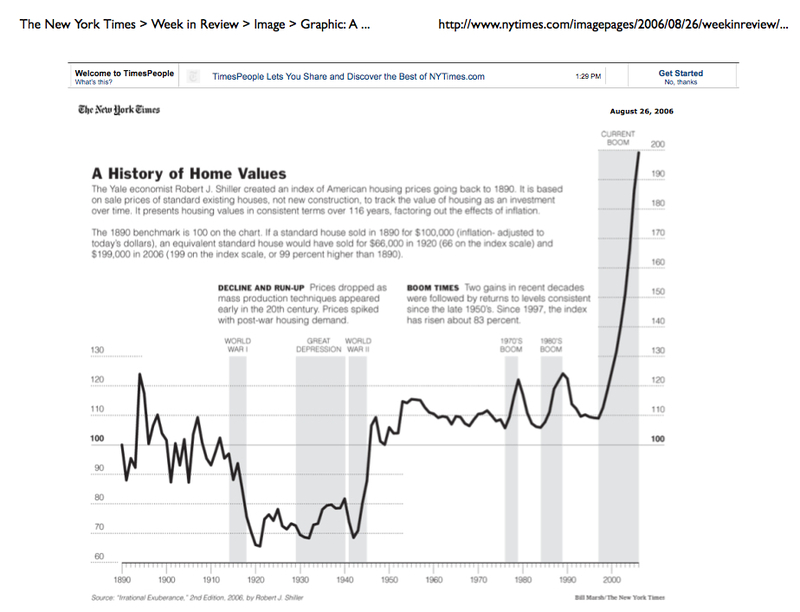There are four factors that helped drive up the price of real estate in the United States and create the housing bubble: The GSEs (Fannie and Freddie), the Community Reinvestment Act, expansionary monetary policy starting in 2001, and the 1997 Taxpayer Relief Act that for the first time let people avoid capital gains on home price appreciation without having to rollover the gains into a bigger house.
All of these factors pushed up the demand for real estate. But by how much? Over the last few weeks I have been focusing on the capital gains change because the run-up in housing prices began in either 1997 or 1995 depending on which data you use.
This New York Times article from today is the first one I’ve seen that focuses on the role of the 1997 tax change in the mortgage mess:
By itself, the change in the tax law did not cause the housing
bubble, economists say. Several other factors — a relaxation of lending
standards, a failure by regulators to intervene, a sharp decline in
interest rates and a collective belief that house prices could never
fall — probably played larger roles.But many economists say that
the law had a noticeable impact, allowing home sales to become tax-free
windfalls. A recent study of the provision by an economist at the
Federal Reserve suggests that the number of homes sold was almost 17
percent higher over the last decade than it would have been without the
law.Vernon L. Smith, a Nobel laureate and economics professor at George Mason University, has said the tax law change was responsible for “fueling the mother of all housing bubbles.”
By
favoring real estate, the tax code pushed many Americans to begin
thinking of their houses more as an investment than as a place to live.
It helped change the national conversation about housing. Not only did
real estate look like a can’t-miss investment for much of the last
decade, it was also a tax-free one.
The authors do a nice job looking at the politics and some of the economics. But they miss one key point. They did not look at prices, and focused instead on sales. But it is prices where the impact is going to start and it is the increase in prices that made all of the other mistakes possible.

It is an unavoidable fact that when you tax-exempt an asset, it’s going to appreciate. The question is how much and what evidence we might look at to confirm the importance of the 1997 tax change. There has been an explosion in ownership in second homes but it’s hard to quantify. The National Association of Realtors has data that show a big increase after 2003, when they started collecting the data. But that could be the result of the price appreciation not the cause of it. I can’t find reliable data before 2003.
Just look at that picture. If it’s accurate, something dramatic happened in 1997 that fueled an explosion in housing prices. I don’t think it was irrational exuberance. I think it was a change in a tax policy that suddenly made houses dramatically more attractive as an investment vehicle. The other factors mattered in pushing up demand. And lots of ugliness had to happen along the way. And maybe the timing is just a coincidence. But I doubt it. You would expect making something tax exempt would increase its price. And the price kept going up when Wall St found new ways to let new homeowners borrow in anticipation of higher prices.



